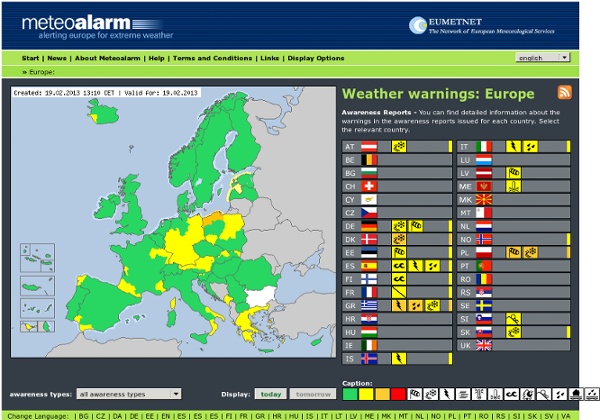



Globaler Wetterbericht - Ihre örtliche Vorhersage Select interests to add to your dock Health Cold & FluAllergiesRespiratoryArthritisMigraineSinus TravelAstronomyEvents A.M. Planner Acceleration of snow melt in an Antarctic Peninsula ice core during the twentieth century : Nature Geoscience Over the past 50 years, warming of the Antarctic Peninsula has been accompanied by accelerating glacier mass loss and the retreat and collapse of ice shelves. A key driver of ice loss is summer melting; however, it is not usually possible to specifically reconstruct the summer conditions that are critical for determining ice melt in Antarctic. Here we reconstruct changes in ice-melt intensity and mean temperature on the northern Antarctic Peninsula since AD 1000 based on the identification of visible melt layers in the James Ross Island ice core and local mean annual temperature estimates from the deuterium content of the ice. During the past millennium, the coolest conditions and lowest melt occurred from about AD 1410 to 1460, when mean temperature was 1.6 °C lower than that of 1981–2000.
Antarctic ice melting 10 times faster than 600 years ago Updated Mon 15 Apr 2013, 11:10am AEST A report has found that the Antarctic summer ice melt is now occurring 10 times faster than it did 600 years ago. Scientists from the British Antarctic Survey and the Australian National University drilled a 360-metre ice core near the northern tip of the peninsula to to identify past temperatures. The ice core gave an extraordinary insight into the temperatures, revealing the coolest conditions, and the lowest melt, occurred six centuries ago. By comparison, it found temperatures now are 1.6 degrees Celsius higher, and the ice melt is 10 times as fast. The lead author of the report, Dr Nerilie Abram from the Australian National University, says the most rapid melt has occurred in the last 50 years.
NESDIS Education & Outreach Vegetation Health Though most of the Earth is covered by water, 25 percent of the planet’s surface is a dynamic green. NOAA scientists use satellite observations of vegetation greenness to develop vegetation health products that can be used as proxy data for monitoring drought, soil saturation, moisture and thermal conditions, fire risk, greenness of vegetation cover, vegetation fraction, leaf area index, start and end of the growing season, crop and pasture productivity, El Niño-Southern Oscillation climate anomalies, desertification, mosquito-borne diseases, invasive species, ecological resources, land degradation and more. Use the slider to follow a weekly “greenup” for 2007. The darkest green areas are the lushest in vegetation, while the pale colors are sparse in vegetation cover either due to snow, drought, rock or urban areas.
How frigid 'polar vortex' could be result of global warming (+video) A bitter Arctic blast spanning the central and eastern US has propelled the phrase "polar vortex" from the pages of dense scientific papers to headline status as frigid temperatures and strong winds close schools and businesses and prompt forecasters to warn of "historic and life-threatening" conditions. Skip to next paragraph Subscribe Today to the Monitor Click Here for your FREE 30 DAYS ofThe Christian Science MonitorWeekly Digital Edition In essence, a buildup of Arctic air, its chill deepened by 24 hours of darkness during winter, has breached its meteorological fence to pour deep into North America. Such outbreaks often involve tendrils of cold air that can leak through the fence.
Antarctica A ‘Key Driver’ Of Global Climate, South Pole Temperatures Affect ‘Rest Of The Planet’ In Minnesota, schools were closed for the first time in 17 years as winter temperatures sank to as low as minus 30 degrees Fahrenheit. "A person not properly dressed could die easily in those conditions," said Scott Trueett, a meteorologist for the National Weather Service. It’s turning out to be a painfully cold winter, colder in many cities than it has been in decades, and many are wondering why. Where are these extreme temperatures coming from? And what’s to be expected?
Information on Hurricanes and Tropical Storms for young people Hurricanes and Tropical Storms Introduction A Hurricane, like other natural disasters, is one that we all pause to listen to each time we hear of it on the news. This is because we have all seen the devastation that it can bring to us. Arctic Sea Ice News and Analysis The sea ice extent has been quickly growing, and by the end of October, ice covered most of the Arctic Ocean. Overall, the ice extent remained below average for this time of year in the Barents and Kara Seas, as well as within northern Baffin Bay and the East Greenland Sea. Overview of conditions Figure 1. Arctic sea ice extent for October 2021 was 6.77 million square kilometers (2.61 million square miles). The magenta line shows the 1981 to 2010 average extent for that month.